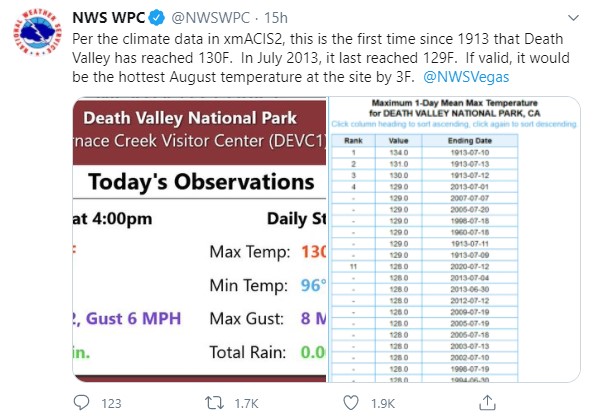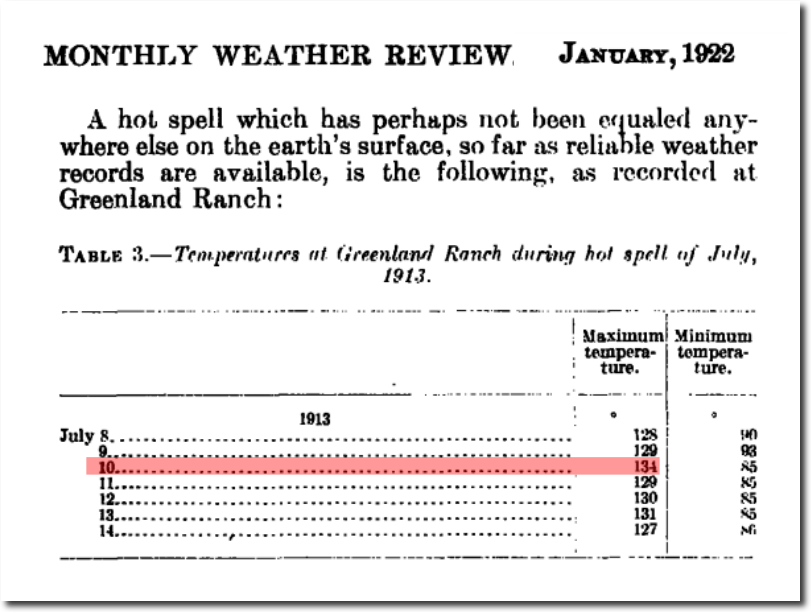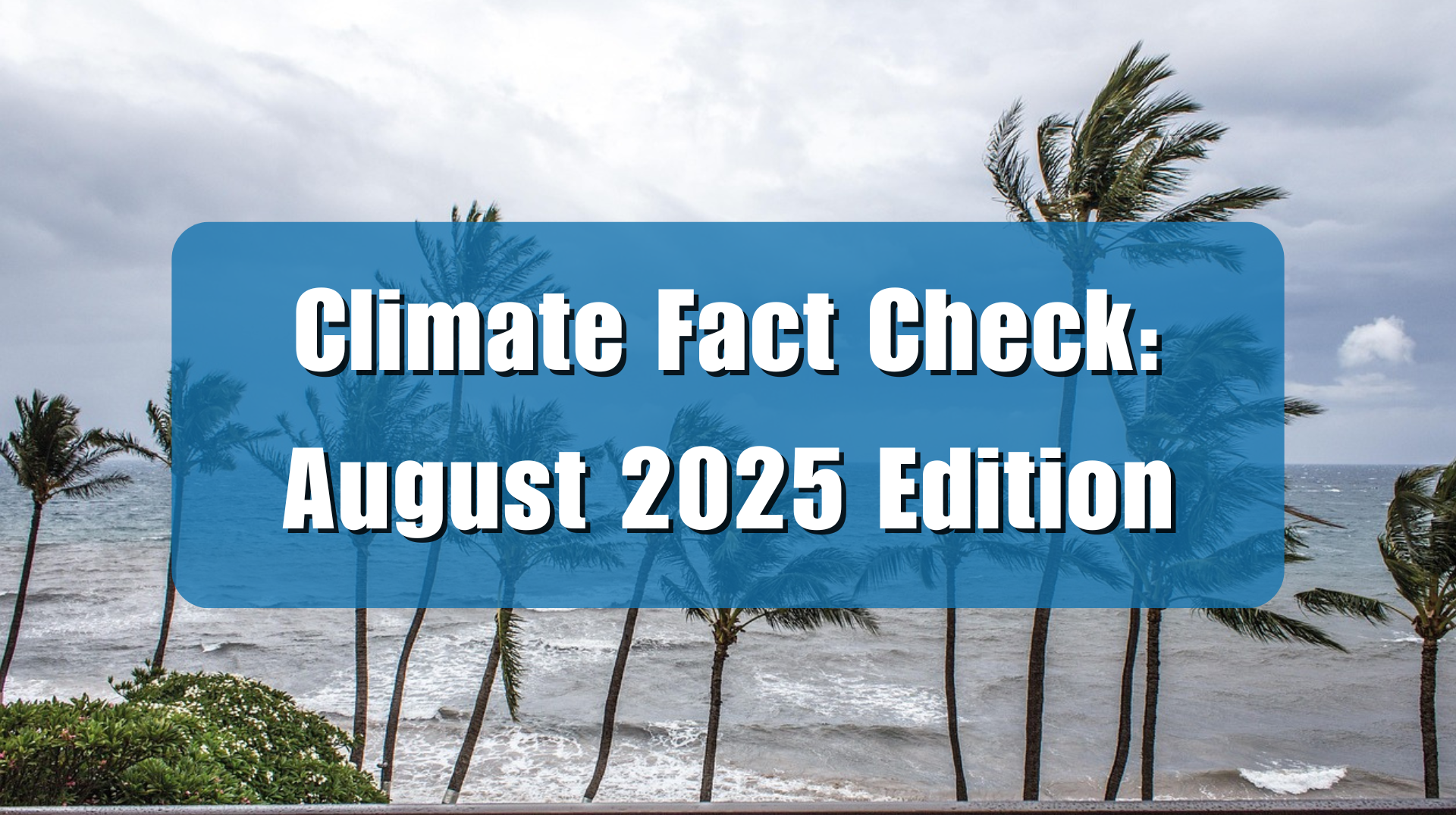On Sunday, August 16th the National Weather Service in Las Vegas, Nevada sent out a Tweet highlighting a new maximum daily temperature of 130°F in Death Valley:

Predictably, the media jumped on this number with the Los Angeles Times saying “…possibly the highest mercury reading on Earth since 1913“. Even the Drudge Report got into the act putting the 130°F temperature headline front and center.
While global warming activists are rubbing their hands together in anticipation and glee hoping this will aid their case, what they and the LA Times aren’t telling you is that this is simply “business as usual” for Death Valley. In fact, back in 1913, over 100 years of “global warming” ago, Death Valley’s official weather station at Greenland Ranch hit an all time record of 134°F, and also hit 130°F or higher three times that July:

While climate crusaders would like you to think today’s 130°F temperature is more “proof” of global warming aka “climate change” induced by fossil fuel use putting more carbon dioxide (CO2) in the atmosphere, the irrefutable fact is that in 1913, CO2 in our atmosphere was about 43% lower than today at 290 parts per million in 1913 compared to the “Climate crisis” level of 414 PPM today.
You have to wonder, if current CO2 levels are responsible for record heat waves today, as climate activists like to claim, how did it produce a still unbroken record temperature of 134°F back in July 1913?
The answer is; it didn’t then, and didn’t today.
The unbearably hot weather in Death Valley is a combination of a hot regional weather pattern and local factors found nowhere else on Earth, according to the National Park Service:
“The depth and shape of Death Valley influence its summer temperatures. The valley is a long, narrow basin 282 feet (86 m) below sea level, yet is walled by high, steep mountain ranges. The clear, dry air and sparse plant cover allow sunlight to heat the desert surface. Heat radiates back from the rocks and soil, then becomes trapped in the valley’s depths. Summer nights provide little relief as overnight lows may only dip into the 85°F to 95°F (30°C to 35°C) range. Heated air rises, yet is trapped by the high valley walls, is cooled and recycled back down to the valley floor. These pockets of descending air are only slightly cooler than the surrounding hot air. As they descend, they are compressed and heated even more by the low elevation air pressure. These moving masses of super heated air blow through the valley creating extreme high temperatures.”
So, don’t fret about climate change because Death Valley got hot again, it’s business as usual for the place, and not an indicator for global temperatures in any way.






















[…] Read more at Climate Realism […]
[…] meteorologist Anthony Watts pointed out in a Climate Realism article, “Media hypes 130°F Death Valley Temperature – but it’s still short of the 134°F record,” back in 1913, over 100 years of “global warming” ago, Death Valley’s official weather station […]
[…] meteorologist Anthony Watts pointed out in a Climate Realism article, “Media hypes 130°F Death Valley Temperature – but it’s still short of the 134°F record,” back in 1913, over 100 years of “global warming” ago, Death Valley’s official weather station […]
[…] In 1913, over 100 years of “global warming” ago, Death Valley’s official weather station at Greenland Ranch hit an all-time record of 134°F, and also hit 130°F or higher three times that July. […]